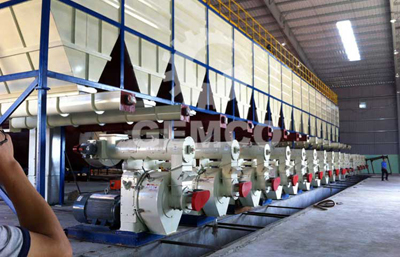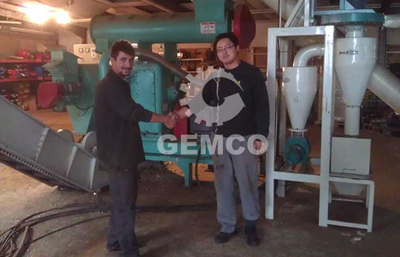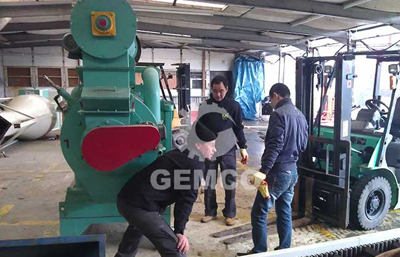Things You Should Consider Before Setting Up A Wood Pellet Plant
Nowadays, with the increasing tendency of cutting expenses and protecting environment, the demand for alternative energy sources is growing. Wood pellet fuel is one of the most popular fuel types. Wood pellets are cheaper and more environment-friendly in comparison with oil, gas or coal. Therefore, a number of entrepreneurs start their own pelleting business. However, most of them will encounter the problem of investment and expenses. The following is the picture of wood pellet plant and what you need to prepare if you want to invest in wood pellet production business.

- First of all, you should take the cost of the raw material into consideration. As we all know, the pellets production line is composed of several parts ( such as: pulverizing, drying, screening, pelletizing, cooling and packaging ), and each part has different functions. What’s more, each part’s adjustment varies. For example, the compression ratio differs between softwood and hardwood. Therefore, you should consider the raw material when choosing the pelletizing equipment.
- Second, the size of the raw material should be considered, because raw materials with larger size need to be pulverized by hammer mill or wood chipper. If tree trunk is used to make wood pellets, wood debarker, wood chipper and hammer mill are essential. Therefore, the final cost varies according to the raw materials.
- Third, you should consider the output capacity of wood pellets. If you expect large capacity at high rate, you’d better choose the expensive machines. What’s more, equipment with larger capacity needs larger space, which increases the cost of building the wood pellet plant.
- Fourth, recycled wood or native fiber should firstly be considered as the raw material for making wood pellets because of the forest protection. Moreover, it is more economical using recycled wood, because the average price of recycled wood is $55-65 per ton, while virgin fiber $70-80 per ton.
- Last but not least, the price of the raw material also depends on its moisture content. Generallly, the average moisture content is from 40% to 60%. Using raw materials with higher moisture content will increase the cost of the drying process when making wood pellets. Therefore, the recycled wood as raw material for producing wood pellets is obviously cheaper as the recycled wood contains less moisture than virgin fiber.
Now we have known about the factors related to the wood pellet manufacturing, the following are the factors included in the cost of the wood pellet plant’s building and operation.
According to the study of Deloitte, the cost of building a wood pellet plant is also influenced by the local factors. First is the energy consumption, and its average cost is $10 per ton. The cost of repairs and lifecycle maintenance equates around $5 per ton. Loading onto rail for bulk shipments will cost $2.5 per ton. Additional capital costs include grinding on site ($3-4 million), pellet storage and rail load facilities ($2 million). Other factors are also important such as labor and basic capital cost, which depend on plant capacity. If it is, for instance, 150,000 ton annually, labor expenses will equate approximately $10 per ton. In case capacity is 100,000 ton annually, basic capital cost will reach $125 per ton. It is also necessary to add the total cost of pellet plant construction depends on region. It will be higher in the European countries in comparison with the USA and Canada, as energy expenses are significantly higher here.
In a word, the cost of pellet plant construction includes a number of factors, among which are types of raw material (its size, moisture content and so on). It makes impact on both feedstock price and types of equipment required. Beyond that, some other factors should be taken into account, such as supposed plant capacity, basic capital cost, labor, repair and maintenance, storage and transportation.
GEMCO has decades of professional experience on designing pellet plant in the most cost-effective way based on client’s requirement. Moreover, GEMCO wood pellet mill, mobile pellet plant and complete wood pellet line have won CE and ISO9000 certifications, so you can count on their quality. If you have any questions about making pellets or setting up a wood pellet plant, feel free to contact us now!
We receive enquiries in English, Español (Spanish), Русский язык (Russian), Français (French) and العربية (Arabic). Our professional team will reply to you within one business day. Please feel free to contact us!




